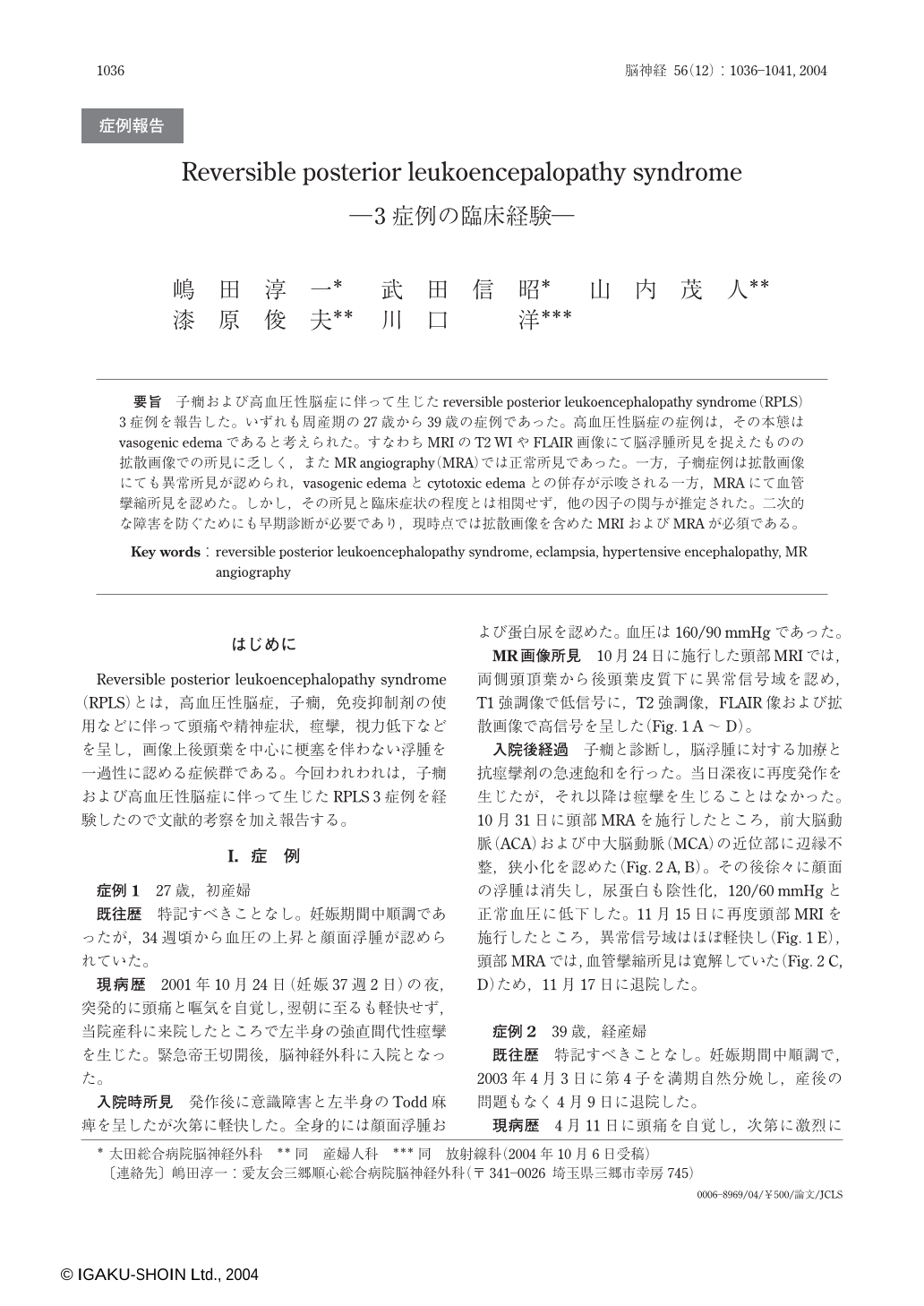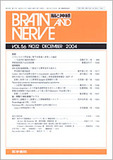Japanese
English
- 有料閲覧
- Abstract 文献概要
- 1ページ目 Look Inside
要旨 子癇および高血圧性脳症に伴って生じたreversible posterior leukoencephalopathy syndrome(RPLS)3症例を報告した。いずれも周産期の27歳から39歳の症例であった。高血圧性脳症の症例は,その本態はvasogenic edemaであると考えられた。すなわちMRIのT2 WIやFLAIR画像にて脳浮腫所見を捉えたものの拡散画像での所見に乏しく,またMR angiography(MRA)では正常所見であった。一方,子癇症例は拡散画像にても異常所見が認められ,vasogenic edemaとcytotoxic edemaとの併存が示唆される一方,MRAにて血管攣縮所見を認めた。しかし,その所見と臨床症状の程度とは相関せず,他の因子の関与が推定された。二次的な障害を防ぐためにも早期診断が必要であり,現時点では拡散画像を含めたMRIおよびMRAが必須である。
We report 3 cases with reversible posterior leukoencephalopathy syndrome(RPLS) accompanied by eclampsia or hypertensive encephalopathy. RPLS may develop in patients who have eclampsia or hypertensive encephalopathy or who are immunosuppressed. The findings on neuroimaging are characteristic of subcortical edema without infarction.
A 27-year-old primigravida developed eclampsia at 37 weeks of gestation. MRI was performed 4 hours after the onset. The FLAIR sequence delineated extensive hyperintense lesions in the temporal and occipital lobe bilaterally. MR angiography(MRA) performed 6 days after the onset of symptoms clearly demonstrated intracranial vasospasm. Follow up MRI and MRA were performed 3 weeks after the onset. The MRI showed slight residual hyperintensity in the occipital lobe. The MRA showed the disappearance of the vasospasm.
A 39-year-old woman on the 8th postpartum day presented with thunderclap headache, which led to a search for SAH. She visited our hospital, whose high arterial blood pressure(220/110mmHg) was observed. Both CT and MRA were normal. MRI revealed abnormalities in the parieto-occipital regions bilaterally. Treatment of hypertension led to resolution of the posterior leukoencephalopathy.
A 38-year-old woman on the 11th postpartum day suddenly developed vertigo, visual disturbance and generalized convulsion. MRI was performed 7 days after the onset. The FLAIR sequence delineated extensive hyperintense lesions in the occipital lobe bilaterally. MRA clearly demonstrated diffuse intracranial vasospasm. MRA performed 3 weeks after the onset showed the disappearance of the vasospasm.
In conclusion, our experience suggests that the MRI and MRA noninvasively provide valuable findings which are complementary in the diagnosis and follow-up examination of a brain edema and vasospasm in RPLS.
(Received : October 6, 2004)

Copyright © 2004, Igaku-Shoin Ltd. All rights reserved.


